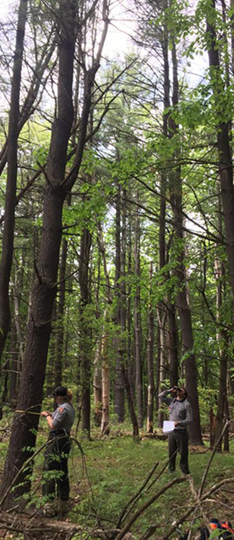Initiative Approach
 Describe Forest Condition - From 12 years of regional monitoring data, describe current status and trends of park forest resources. Produce regional comparisons to place individual park conditions in a regional context.
Describe Forest Condition - From 12 years of regional monitoring data, describe current status and trends of park forest resources. Produce regional comparisons to place individual park conditions in a regional context.
Connect Park Managers - Identify parks facing similar threats to facilitate collaboration among parks and management efficiencies.
Recommend Tools - Provide recommendations on management actions that will promote resilient forest ecosystems within parks, including case studies and lessons learned from recent management efforts in Region 1 parks.
Support Adaptive Management - Collaborate with parks to integrate Inventory and Monitoring (I&M) data into management decision-making. On-going monitoring not only keeps track of management progress but creates a framework for adapting that management over time as needed.
Initiative Products
- Park-specific resource briefs for the thirty-nine Region 1 I&M parks summarizing forest health condition and trends.
- Array of management strategies for parks faced with:
- Management recommendations will focus on tools available to park managers such as:
- In-person training for Region 1 natural resource managers, focused on the recommended management strategies for promoting resilient forests, to be held in November 1-3, 2022 at the National Conservation Training Center. This training will enable information exchange among parks, provide guidance on forest management from experts throughout the northeastern US, and build capacity within the region for implementing forest management.
Forest Health highlights shared on NPS.gov
Last updated: January 6, 2022
